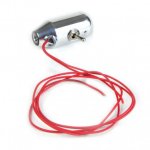D
Deleted member 21878
Guest
Guest
Offline
i have never had a car with OD before so i was not really sure what to expect. i have read how they should operate and i believe mine to be operating as it should. it is certainly easy to look down and see you are running 65mph without even thinking about it.
i have also read posts on putting the car in OD and taking it out. i feel good about that.
but i wondered about how i actually have been using it.
so far if i feel like i am going to be running over 50 for more than a mile, which takes me about 2500 rpm, i tend to want to flip it up in to OD. it is funny but the engine seems quieter at 2700rpm in OD as opposed to 2700 rpm not in OD. maybe the extra speed just carries the sound away more or maybe the little extra load makes it seem quieter.
i have also pulled up to stop signs and forgot to take the car out of OD. then when i get back in to 4th gear and think about putting it in OD, i see i am already there.
then there are times i am just cruising on a back road at say 50-55 and drop the car in because it just seems to run there so easily. almost like a high idle.
so is there a harm to shifting the car in to OD for a mile or so? or better to run the extra RPM's out of OD?
does it hurt to leave the car in OD when you don't really need it?
just curious if there are some do's and don'ts when using the OD system? or a consensus on when and how much to use the system?
Thanks and if this is covered in another thread, sorry... maybe just show me how to get to it.
i have also read posts on putting the car in OD and taking it out. i feel good about that.
but i wondered about how i actually have been using it.
so far if i feel like i am going to be running over 50 for more than a mile, which takes me about 2500 rpm, i tend to want to flip it up in to OD. it is funny but the engine seems quieter at 2700rpm in OD as opposed to 2700 rpm not in OD. maybe the extra speed just carries the sound away more or maybe the little extra load makes it seem quieter.
i have also pulled up to stop signs and forgot to take the car out of OD. then when i get back in to 4th gear and think about putting it in OD, i see i am already there.
then there are times i am just cruising on a back road at say 50-55 and drop the car in because it just seems to run there so easily. almost like a high idle.
so is there a harm to shifting the car in to OD for a mile or so? or better to run the extra RPM's out of OD?
does it hurt to leave the car in OD when you don't really need it?
just curious if there are some do's and don'ts when using the OD system? or a consensus on when and how much to use the system?
Thanks and if this is covered in another thread, sorry... maybe just show me how to get to it.

 Hi Guest!
Hi Guest!

 smilie in place of the real @
smilie in place of the real @
 Pretty Please - add it to our Events forum(s) and add to the calendar! >>
Pretty Please - add it to our Events forum(s) and add to the calendar! >> 

